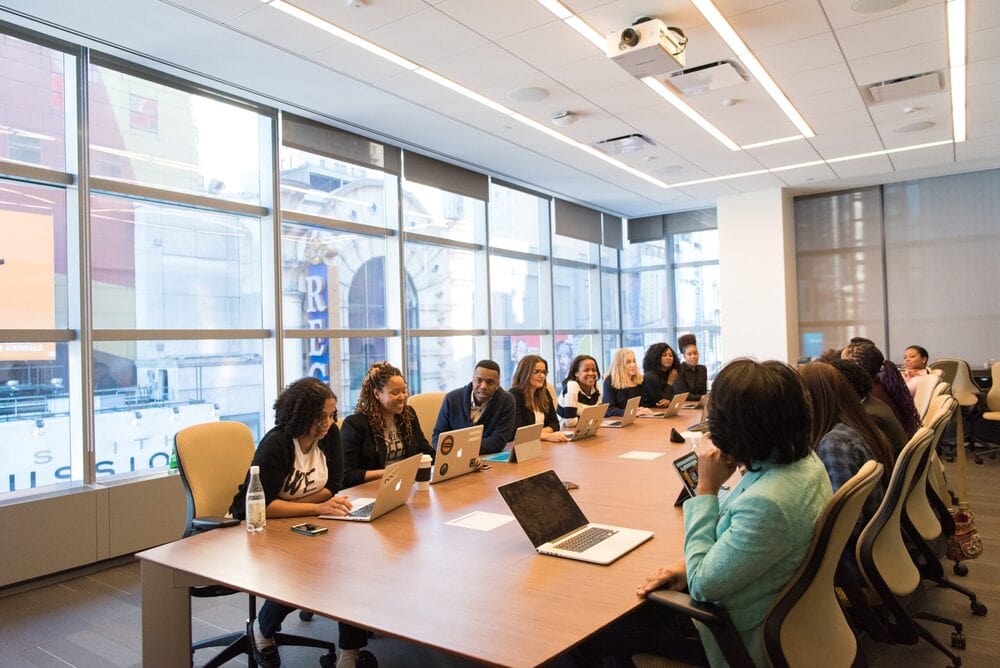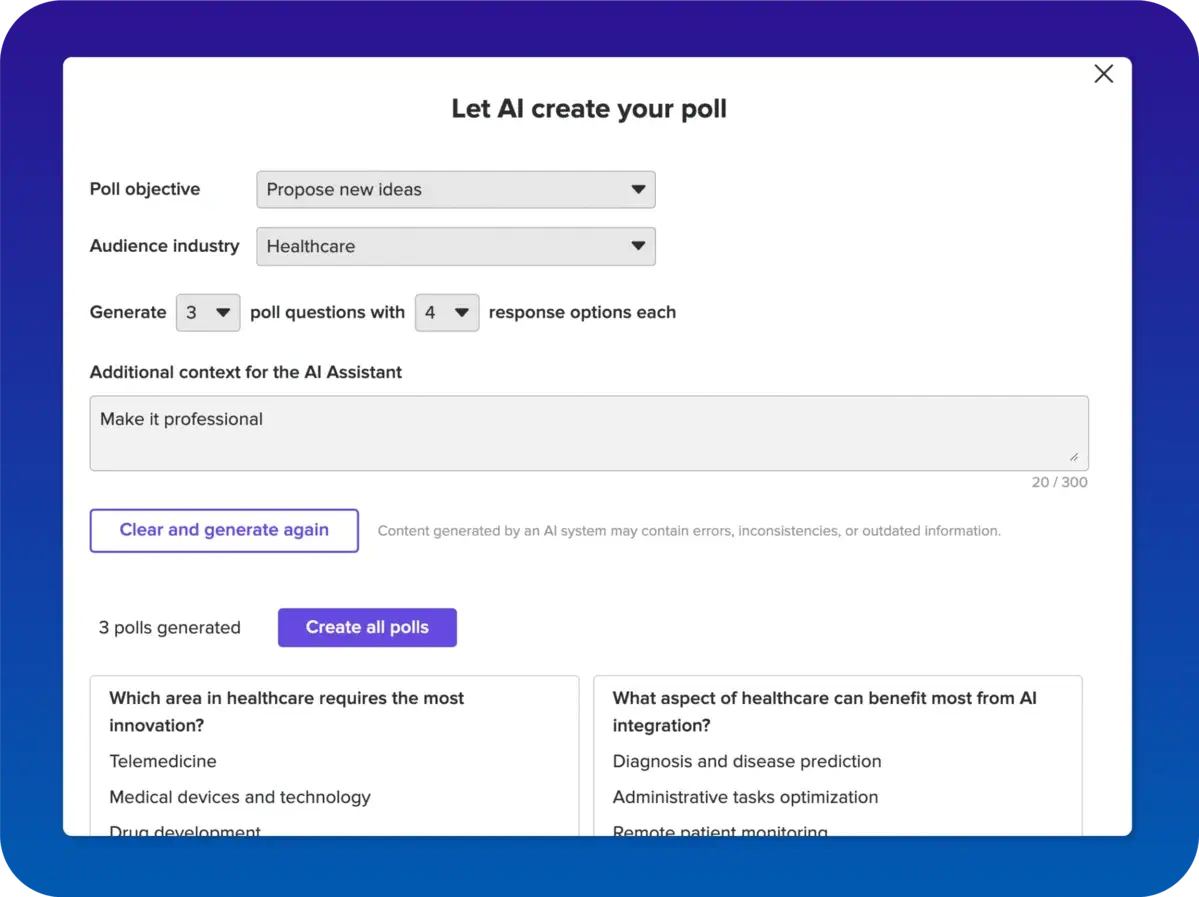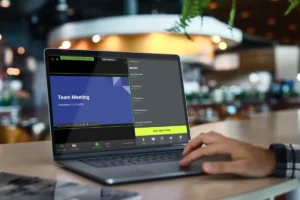Think about the last time you worked with a large group to tackle a problem or generate new ideas. Did more than one member of the group offer creative ideas or solutions? Did the energy of the group promote better, more wide-ranging discussions and thought? It’s more than likely that you saw collective intelligence at work.
The National Endowment for Science Technology and the Arts defines collective intelligence as the process of sharing knowledge, data, and skills within a large group to solve problems. When you work on something alone, you are limited by your general individual intelligence, experience, and outlook. But when you work with others, your team’s combined capacity boosts your collective IQ. That tends to make collective intelligence research and group problem-solving highly effective. Throwing in the use of artificial intelligence extends a group’s abilities beyond human intelligence.
Chances are you’ve benefited from group intelligence at work, whether you were gathering data, pooling efforts to solve problems, or making business decisions. Organizations can use collective intelligence principles to gather information through surveys, polls, and other techniques, too.After all, asking questions is the best way to find out what your employees or colleagues are thinking and feeling about a wide range of issues, from their own roles, to recent projects, or the company’s overall direction. You can combine that general intelligence to get better ideas for improving future performance.
Benefits of collective intelligence
The benefits of collective intelligence in the workplace are many and collective intelligence works in a wide range of professional settings. Here are just a few ways mass collaboration benefits team performance and success.
Improve creativity
If two heads are better than one, then it makes sense that a group working together can significantly raise collective IQ and creativity. We can call that the multiplier effect. Collective intelligence design is often more thoughtful and unique, due to the shared knowledge and understanding of a group, and its ability to push past the limitations of individual thinking.
Boost productivity
Open communication and collaboration is known to boost productivity at work. When one team member feels heard, or feels comfortable contributing to a group, they’re more eager to participate. When you have a group of engaged people who feel free to voice their ideas and opinions openly, it can translate into effective mobilization of skills
Improve coordination
Crowdsourcing helps teammates find better, stronger ways to collaborate and complete tasks. Exercising collective intelligence, by its very nature, requires and reinforces coordination. This can, in turn, help streamline processes for similar tasks down the road and improve group satisfaction.
Make your team smarter
Take the above benefits and roll them into one, and you can easily understand the general collective intelligence factor, or simply put, the creation of a smarter team. The group’s capacity is part of what’s sometimes called “universally distributed intelligence.” A workplace that is practiced at accessing its linked collective intelligence will find that it can tackle problems with increasing sophistication.
Reduce cost
With a smarter, more productive and collaborative team, you’ll not only save time, but also money. Extended processes take more time, which translates into more money. They also require more oversight, which also translates into a higher cost. Linked collective intelligence will help you cut costs in more ways than one, resulting in a healthier bottom line and a happier team.
What does it look like in a business place?
A business that values collective intelligence will nurture certain behaviors and create an environment that promotes employee engagement. Here are some of the things you could see at such a company:
- Safe environment. A psychologically safe environment is a big proponent to individual contribution. Think back to a time when you spoke up and felt like your idea or thought wasn’t well-received. Did it cause you to stop contributing? An environment that is open, non-judgmental, and promotes collective intelligence is more likely to be a safe environment.
- Equal participation. This goes hand in hand with a safe environment. When individuals gather, but only the loudest and most-powerful voices in the room are heard, collective intelligence is diminished. When team members can participate equally, a team’s combined capacity can be realized. This can also allow teams to reach across borders to work with other departments to develop new, dynamic concepts and tap into new ideas and capabilities.
- Opinions and feedback are valued. When every person feels valued and appreciated, your team is likely to continue to thrive.
- Provide every opportunity to contribute. Have you ever left a meeting feeling that you had a great idea but held back because the timing never seemed right? That’s not an environment where collective intelligence can prosper. Groups need to not only create an atmosphere for full participation, but also use tools and structure meetings to encourage it.
- Encourage constructive conflict resolution. Group problems and disagreements sometimes arise, and they can generate positive results if handled properly. Company and team leaders need to create an environment that allows for constructive conflict. This might require training to help leaders and other employees to make the correct decision in the heat of a disagreement.
Using survey tools for collective intelligence
MeetingPulse’s tools can be easily used to nurture and harvest collective intelligence. Here’s how:
- Live surveys and polling. Going back to what we said in the beginning, simply asking your colleagues questions is the easiest way to learn more about what they’re thinking. Surveys and polls are a great way to crowdsource information for new ideas, solving diverse problems, or finding areas for improvement. MeetingPulse’s survey and polling tools also allow for anonymous responses, which can increase the value of the information you receive. When anonymity is granted, the responses can be more honest and open because the respondents are less worried about how they’ll be perceived. Our digital tools are designed to provide psychological safety for employees in group settings.
- Live brainstorming. MeetingPulse’s tools make it easier to brainstorm because you can create a visual white board to put everyone’s ideas on, or let people submit them through the app (anonymously, if you wish). You can easily save all the input you received, each session, and use that information going forward, just as you can with our survey and polling tools.
- Live sentiment analysis. Our digital tools allow you to ask people how they’re feeling about anything you’d like to. Pulse Sentiment Analysis allows you to save the data for later, which is helpful for analysis and making informed choices.
Interested in seeing it work? Sign up for a new account and get started.










